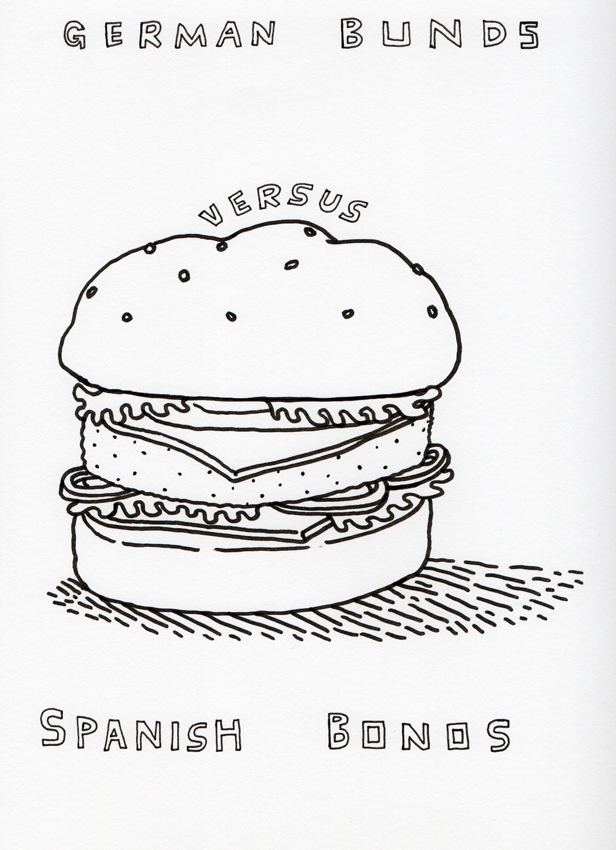Various venues, Vienna, 8 September – 15 October 2016
This year’s edition of the sprawling series of exhibitions under the umbrella title curated by_vienna takes place in 19 commercial galleries across the city. Each invited a curator to respond to a theme set by the critic (and professor at the Academy of Fine Arts in Vienna) Diedrich Diederichsen.
In his short text titled ‘My Origins? I Made Them Up’, Diederichsen suggests that artistic displays of homage marked by Oedipal or avant-garde breaks are futile, and even a Western fetish for non-market-oriented ‘minority and marginalized histories’ leads only to their becoming absorbed into the (institutionalised) mainstream. Diederichsen suggests one possible way out of this impasse with Afrofuturism, appearing via a chaotic and traumatic physical and cultural scattering (presumably as a result of colonialism and/or the slave trade). As he characterises it, Afrofuturism sees the present as being productively related to a possible future, rather than a progression from the past (in this respect there seems to be a reflection of the messianism of Walter Benjamin, although Diederichsen does not bring it up). In this way, one’s origins turn into a future-oriented concern. The curatorial responses to this take a number of forms, but often the curators’ engagement with Diederichsen’s ideas is less than clear.
At Kerstin Engholm Gallery, Heike Munder curates Resistance Performed Revised: Aesthetic Strategies under Repressive Regimes in Latin America, a show revisiting the vibrant period of artistic dissent towards local authoritarian regimes during the 1970s. Included is evocative documentation of ephemeral performances: the 3Nós3 group from São Paulo stretching coloured plastic sheets across roads in Interdiction (1979), or Marta Minujín’s The Parthenon of Books (1983), a replica of the Acropolis temple made from 30,000 books that had been banned under the recently ended dictatorship in Argentina (a version of the work will be on view in Kassel as part of Documenta 14).
Curator Luis Pedro Miret Perez’s Chaotica: An Approach to Chaos from the Perspective of Cuban Fine Arts, at Galerie Ernst Hilger, addresses social and political issues in more sculptural ways than the ephemeral interventions seen in the previous show. Ariamna Contino presents elaborate framed paper cutouts of guns in the Untitled (Arsenal) (2016) series, and Tonel’s ironic cartoons on the subject of economics such as Bunds vs. Bonos (2011), or the stack of metal letters awaiting rearrangement into meaningful words in Ivan Capote’s Anagram (New world order) (2015) appear as subtle tactical commentaries rather than direct interventions into society.
At Mario Mauroner Contemporary Art, curator Luigi Fassi’s Nur im Okzident (Only in the Western World) refreshingly addresses the Western bias of modernity (and contemporaneity) with a group of artists critical of the hegemony of Eurocentric discourses, particularly the early-twentieth-century philosopher Max Weber’s assertion that rationality is a uniquely European phenomenon. A set of oversize passport stamps carved from large blocks of wood make up Barthélémy Toguo’s The Administrator (2008). The stamps’ handles are in the shape of human heads and shoulders, while the base is carved to print statements such as ‘JULIUS CAESAR IN AFRICA’, ‘BANANA COFFEE DIAMOND NO VISA’, pointing to legacies of invasion and colonialism. Haroon Gunn-Salie’s video History after Apartheid (2015) collects footage of demonstrations throughout the world broken up by the police with water cannons, coloured dyes in the water marking out the protesters for later identification and at the same time creating an enduring aesthetic for the rationality of violence.
Bettina Steinbrügge curates Emak Bakia at Krobath Wien, proposing the ‘significance of the formal based on historical as well as contemporary positions’, and taking inspiration from Man Ray’s eponymous 1926 film and Henri Michaux’s 1950s ‘mescaline drawings’ made under the influence of the drug. Providing contemporary responses to the modernist formalism that Ray and Michaux were reacting to are Nasreen Mohamedi’s Malevich-influenced abstractions, Haleh Redjaian’s installations of threads delineating space and Sofie Thorsen’s cut-paper sheets hanging loosely off rigid upright rods.
Winter Is Coming (Homage to the Future), curated by Maria Arusoo at Georg Kargl Fine Arts, draws heavily on the symbolism of myth and technology. The candles and grotesque rock formations of Joey Holder’s installation Tetragrammaton (2016) appear to create a site for ritual magic, on the floor in front of which dawdles Agnieszka Polska’s The Bearer of Bad News (2015), a video projection of the shadow of an aimlessly wandering figure. In the next room, Andreas Angelidakis’s video VESSEL (2016) in part suggests that the illustrations on ancient pots may have served as a contemporaneous version of the Facebook newsfeed. The show as a whole leaves the visitor with an uncomfortable feeling of being present in alternate readings of the past and mythological interpretations of the present.
The exhibitions mentioned above are all effective individual presentations, but their relation to Diederichsen’s theme often seems tenuous, which is a problem for curated by_vienna as a whole. Diederichsen’s essay is provocative: for all its brevity it contains an argument with complex (and potentially controversial) ramifications. However, his explicit questioning of the basic notion of ‘homage’ is not critically reflected upon in most of the attendant exhibitions, leaving a sense that these shows have little connection to each other or even relevance to the purported theme of the project.
This article was first published in the December 2016 issue of ArtReview.
